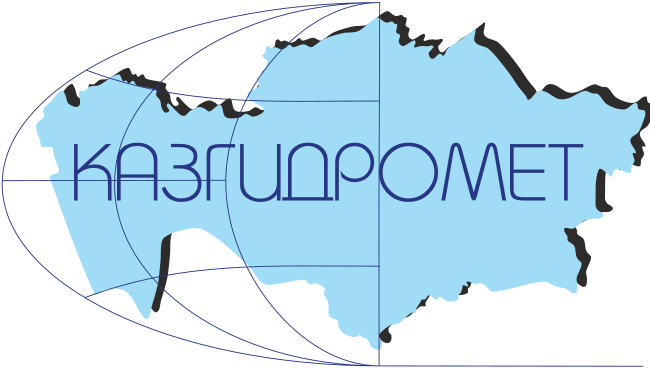CARTOGRAPHIC ANALYSIS OF SPATIAL AND TEMPORAL CHANGES IN AIR POLLUTANTS IN ALMATY
DOI:
https://doi.org/10.54668/2789-6323-2025-116-1-116-131Keywords:
ecology, urban areas, environmental impact, thermal power plants, public health, air pollution index, mapAbstract
One of the biggest problems in our time is mass air pollution, which leads to climate change, as well as negatively impact public health, accelerating the growth of morbidity and mortality. The scientific article examines the issues of population growth of Almaty in recent years, air pollution, and its negative impact on the health of Almaty’s residents due to low-quality coal burning in thermal power plants, private sector homes, and emissions from motor vehicles. Emissions from coal-fired power plants also contribute to the formation of greenhouse gases that rise into the atmosphere and warm the planet, posing challenges for the urban population. Additionally, due to environmental pollution, an excessive increase in pollutants such as SO2, CO2, NO2, PM2,5, and PM10 in the air has been observed, leading to a rise in the incidence of bronchitis, infectious bronchitis, pneumonia, and chronic lung diseases among the population. The levels of exposure of car exhaust gases and emissions from thermal power plants were analyzed and studied. Based on statistical data from 2016 to 2024, precise maps of pollution levels and an accurate assessment of city’s impact on the implementation of measures to improve air quality in Almaty were compiled. These efforts include protecting and restoring urban ecosystems, creating and maintaining a comfortable and environmentally save living environment for people in urbanized areas. These maps enable the development of solutions to reduce the anthropogenic impact of urbanization on the natural environment and facilitate the preparation of swift and specific projects to preserve environmental balance.
References
Awe Y., Nygard J., Larssen S., Lee H., Dulal H., Kanakia R (2015). Clean air and healthy lungs Enhancing the World Bank’s Approach to Air Quality Management, the World Bank, 130 p.
Ambient air pollution: a global assessment of exposure and burden of disease, WHO Geneva, 2018, 4 p.
Shaddic G., Thomas M.L., Mudu, P., Ruggeri G., Gumy S. (2020) Half the world’s population are exposed to increasing air pollution. npj climate and atmospheric science, Vol. 3, pp. 1–5.
Kerolyn S., Giulia R., Michal K, Pierpaolo M., Mazen M (2023). WHO air quality database: relevance, history and future developments. Bulletin of the World Health Organization, Vol. 101, No. 12, pp. 800 - 807. http://dx.doi.org/10.2471/BLT.23.290188
World Health Organization (2023). WHO ambient air quality database, 2022 update: status report. World Health Organization. https://iris.who.int/handle/10665/368432. License: CC BY-NC-SA 3.0 IGO
Shaddick G., Salter JM., Peuch VH., Ruggeri G., Thomas ML., Mudu P. (2021) Global air quality: an inter-disciplinary approach to exposure assessment for burden of disease analyses. Atmosphere (Basel), Vol.12, No. 1, doi:48. 10.3390/atmos12010048
Iriti M., Piscitelli P., Missoni E., Miani A. (2020). Air pollution and health: the need for a medical reading of environmental monitoring data. International Journal of Environmental Research and Public Health, Vol.17, 2174. doi: 10.3390/ijerph17072174.
Yorifuji T., Kashima S., Doi,H. (2016). Acute exposure to fine and coarse particulate matter and infant mortality in Tokyo, Japan (2002- 2013). Science of the Total Environment, 551-552, 66–72. doi: 10.1016/j.scitotenv.2016.01.211.
Johnston J.E., Okorn K., Van Horne Y.O., Jimenez A. (2021). Changes in neighborhood air quality after idling of an urban oil production site. Environmental Science: Processes and Impacts 23, 967–980.
P´etremand,R., Wild P., Cr´ez´ e C., Suarez G., Besançon S., Jouannique V., Debatisse A., Guseva Canu I. (2021). Application of the Bayesian spline method to analyze real-time measurements of ultrafine particle concentration in the Parisian subway. Environment International, 156. https://doi.org/10.1016/j.envint.2021.106773
Chen R., Yang J., Chen D., Liu W.-J., Zhang C., Wang H., Li B., Xiong P., Wang B., Wang Y., (2021). Air pollution and hospital outpatient visits for conjunctivitis: a time-series analysis in Tai’an, China. Environmental Science and Pollution Research 28, 15453–15461. DOI: 10.1007/s11356-020-11762-4
De Fatima Andrade M., Kumar P., de Freitas E.D., Ynoue R.Y., Martins J., Martins L. D., Nogueira,T., Perez-Martinez P., de Miranda R.M., Albuquerque T. (2017). Air quality in the megacity of Sao ˜Paulo: evolution over the last 30 years and future perspectives. Atmospheric Environment, 159, 66–82.
Gulia S., Khanna I., Shukla K., Khare M. (2020). Ambient air pollutant monitoring and analysis protocol for low and middle-income countries: An element of comprehensive urban air quality management framework. Atmospheric Environment, 222
Tepanosyan G., Maghakyan N., Sahakyan L., Saghatelyan A. (2017). Heavy Metals Pollution Levels and Children Health Risk. Assessment of Yerevan Kindergartens Soils. Ecotoxicology and Environmental Safety,142, 257–265. https://doi.org/10.1016/j.ecoenv.2017.04.013
Lv J., Liu Y. (2019) An integrated approach to identify quantitative sources and hazardous areas of heavy metals in soils. The Science Total Environment, 646, 19–28. https://doi.org/10.1016/j.scitotenv.2018.07.257
Қазақстан климатының жай-күйі мен өзгеруі мониторингінің жыл сайынғы Бюллетені – [Электрондық ресурс]: https://www.kazhydromet.kz/en/klimat/ezhegodnyy-byulleten-monitoringa-sostoyaniya-i-izmeneniya-klimata-kazahstana, жүгілген күн: 20.12.2024
Assanov D., Zapasnyi V., Kerimray A. (2021) Air Quality and Industrial Emissions in the Cities of Kazakhstan. Atmosphere. 12, 314. https://doi.org/10.3390/atmos12030314
Мейрамбекқызы А. (2020). Алматы түтінге тұншығып тұр. 2-ЖЭО-н газға көшіру қала экологиясын жақсарта ма? // Портал Информбюро. – [Электрондық ресурс]: https://informburo.kz/kaz/almaty-ttnge-tnshyyp-tr-2-zheo-n-gaza-kshru-ala-ekologiyasyn-zhasarta-ma.html, жүгілген күн: 10.01.2025).
World Health Organization. (2024). Ambient (outdoor) air pollution // WHO. – [Электрондық ресурс]: https://www.who.int/news-room/fact-sheets/detail/ambient-(outdoor)-air-quality-and-health жүгілген күн: 10.01.2025.
Downloads
Published
How to Cite
Issue
Section
License
Copyright (c) 2025 Hydrometeorology and ecology

This work is licensed under a Creative Commons Attribution-NonCommercial-NoDerivatives 4.0 International License.





